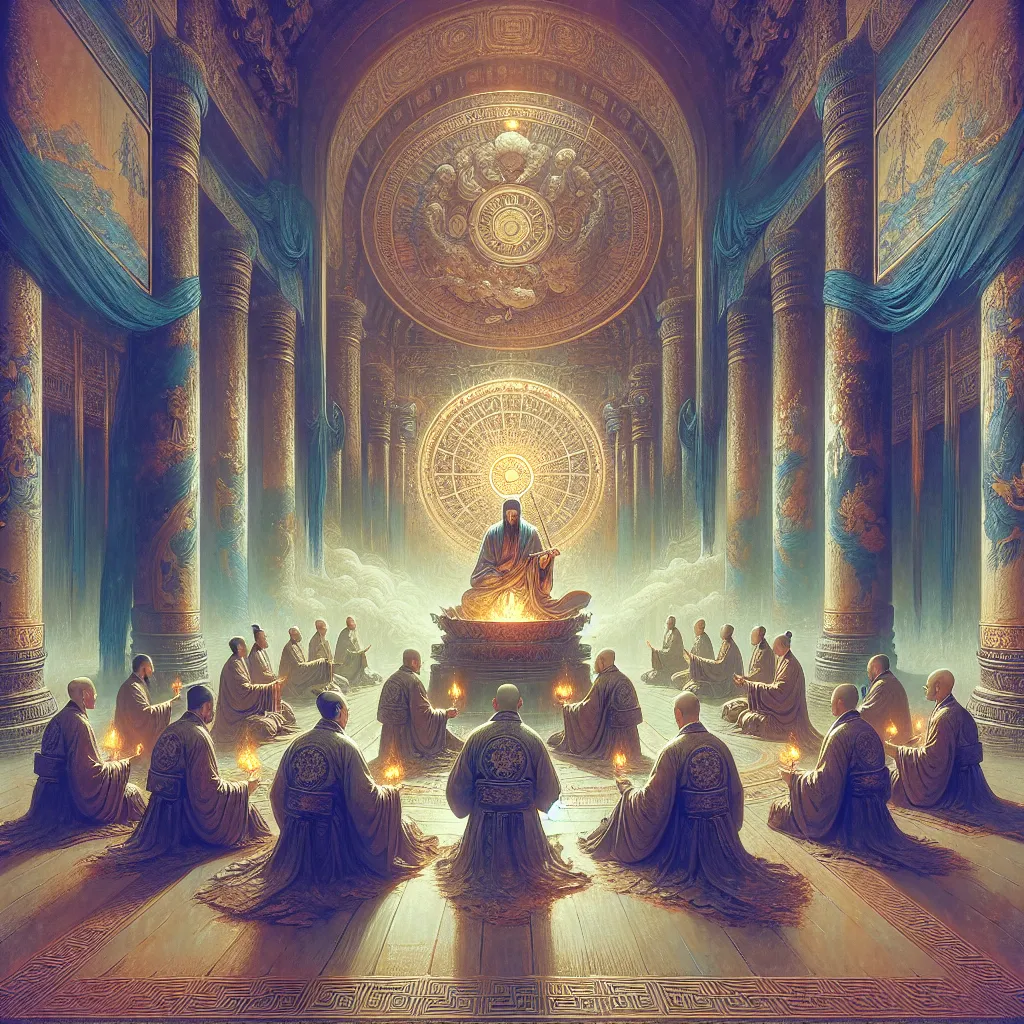
- Published on
- Authors

- Name
- You
Taoist Rituals and Ceremonies: Connecting with the Divine
Taoism, one of the ancient spiritual traditions of China, offers a unique perspective on connecting with the divine and the cosmos through a variety of rituals and ceremonies. These practices not only honor the natural world but also align the practitioner with the flow of Tao - the fundamental principle that underlies and unites all reality.
The Significance of Taoist Rituals
Taoist rituals are designed to harmonize human activities with the unseen forces of the cosmos. They acknowledge the presence of deities, ancestors, and spirits, establishing a network of relationships between the material and spiritual worlds. Below, we delve into some of the central rituals and their significance.
| Ritual | Purpose | Instruments Used | Significance |
|---|---|---|---|
| Jiao (Offering Ritual) | To honor deities and ancestors | Incense, Food offerings, Robes | Promotes communal harmony and cosmic balance |
| Chiao (Rite of Cosmic Renewal) | To renew and purify the community | Sacred texts, Bells, Drum | Ensures cosmic order and spiritual renewal |
| Feng Shan (Mountain and Ruler Ritual) | To seek divine favor for the ruler and the nation | Altars, Sacred spaces, Incense | Links the state with divine protection and cosmic order |
| Zhai (Fasting Ritual) | To cleanse oneself of impurities | Cleanse diet, Meditation, Prayer | Purges physical and spiritual impurities |
Mystical Practices in Taoist Ceremonies
Meditation and Inner Alchemy
At the core of many Taoist ceremonies lies the practice of meditation and inner alchemy. These meditative practices are often performed during rituals to cultivate "Qi" (life force) and align the practitioner's energy with the cosmos. Inner alchemy involves the transformation of physical body energies into spiritual energies, reminiscent of modern understandings in quantum physics, where matter and energy are interchangeable.
The Use of Sacred Geometry
Taoist altars and ceremonial spaces often incorporate sacred geometry, designed to reflect the cosmic order. This concept, shared with advanced scientific principles like fractals and the Fibonacci sequence, underscores an intrinsic link between the microcosm (individual) and the macrocosm (universe).
| Shape | Symbolism | Application |
|---|---|---|
| Circle | Eternity, Unity | Used in altar designs, ritual dance |
| Lotus Flower | Purity, Spiritual Awakening | Iconography, altar adornments |
| Yin-Yang | Balance of opposites | Central in ritual diagrams and meditative focuses |
Taoist Rituals in Modern Context
In modern times, Taoist rituals are not just traditional holdovers but are increasingly appreciated for their psycho-spiritual benefits:
- Stress Reduction: Practices like Qigong and meditation align the mind-body-spirit complex, reducing stress and increasing well-being.
- Community Cohesion: Rituals provide a framework for communal activities, strengthening social bonds.
- Environmental Awareness: Many Taoist ceremonies emphasize respect for nature, promoting ecological consciousness.
Conclusion
Taoist rituals and ceremonies transcend time, holding deep significance both in ancient contexts and contemporary spiritual practice. Through offerings, fasting, meditation, and the use of sacred geometry, these rituals facilitate a profound connection between practitioners and the divine cosmos. They harmonize the inner and outer worlds, embodying a rich blend of mystical wisdom and principles that resonate with advanced scientific understanding.
Embracing these ancient practices can lead individuals on a transformative journey, fostering a holistic connection with the universe's boundless energies—a timeless path to balance, harmony, and enlightenment.
